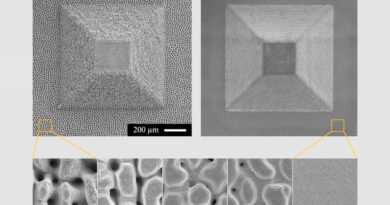Sound absorber made from fungus
Two German institutes in Fraunhofer develop fungus-based sound absorbers
Sound absorbers are a necessity in improving a room’s acoustics, however, many of the materials used in wall fittings today are not sustainable as they are made of mineral fibres and synthetic foams. In an effort to bring to the market a more environmentally friendly alternative, Fraunhofer UMSICHT is collaborating with Fraunhofer IBP to develop fungus-based sound absorbers. As the project manager Julia Krayer has been working on biomaterials for a long time, she saw an opportunity to focus on vegetal substrates and mycelium for the development of new materials. Mycelium consists of a fine network of filament-like hyphae, which can span more than a square kilometre in its natural habitat.
At present, the team is growing hyphae in their lab. This mycelium is mixed with a vegetal substrate consisting of straw, wood, and food production waste, which is then 3D-printed into the desired shape. Creating a solid structure is possible as the mycelial hyphae permeate the fine-grained substrate. Once this has happened, the product is dried in a kiln to kill the fungus. The resulting material features open cell walls and a 3D-printed porous structure, making it ideal for sound absorption. Using a fungus-based material for sound absorbers comes with a range of advantages, including its effectiveness, sustainable properties, conservation of other resources, and the ability to save space as only thin layers are needed owing to its solid structure.
Currently, the team at Fraunhofer UMSICHT is producing a range of prototypes for a sustainable sound absorber, which will then be tested at Fraunhofer IBP.
Info by springwise.com




